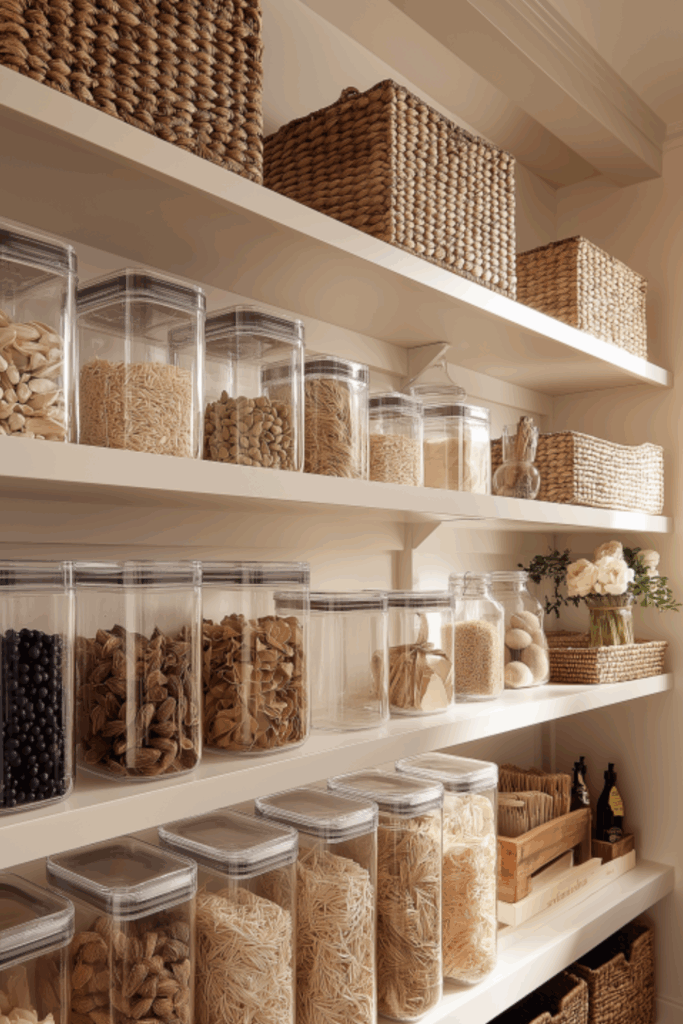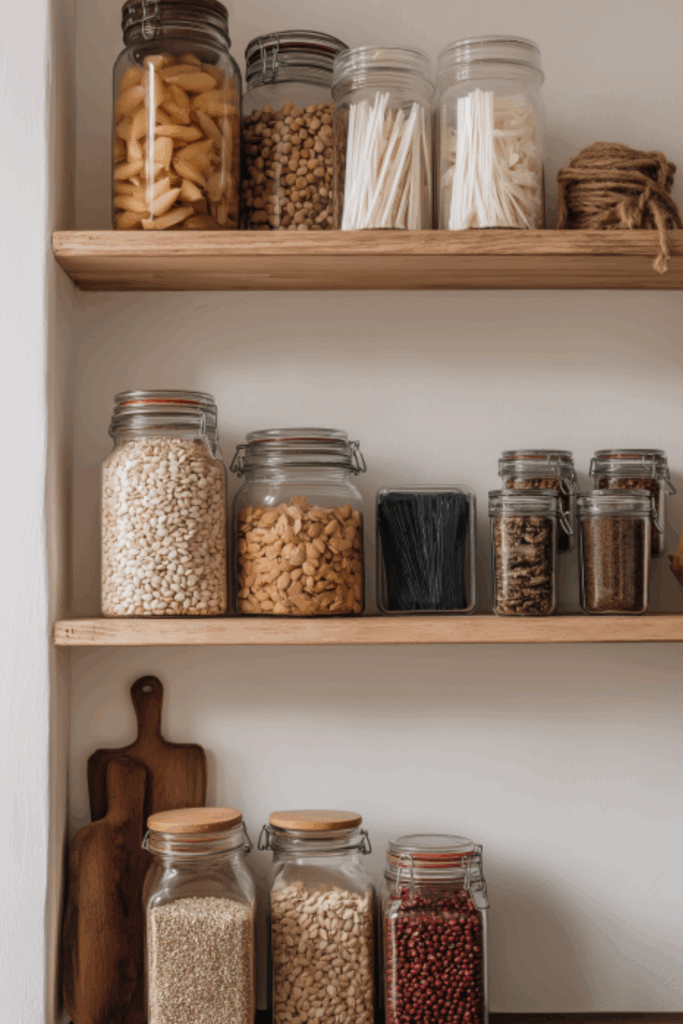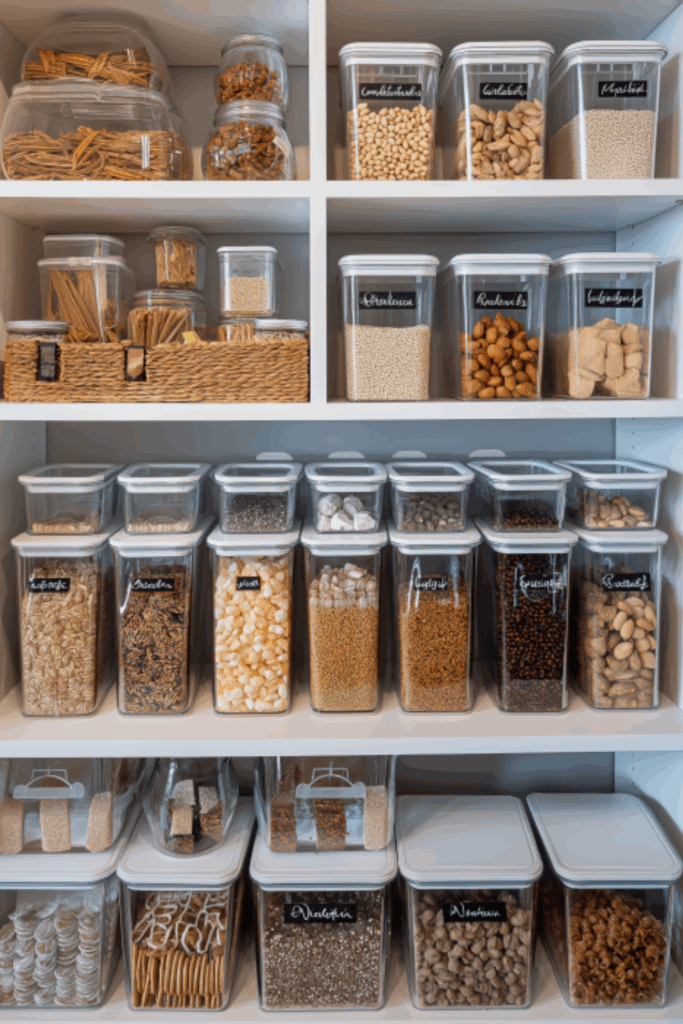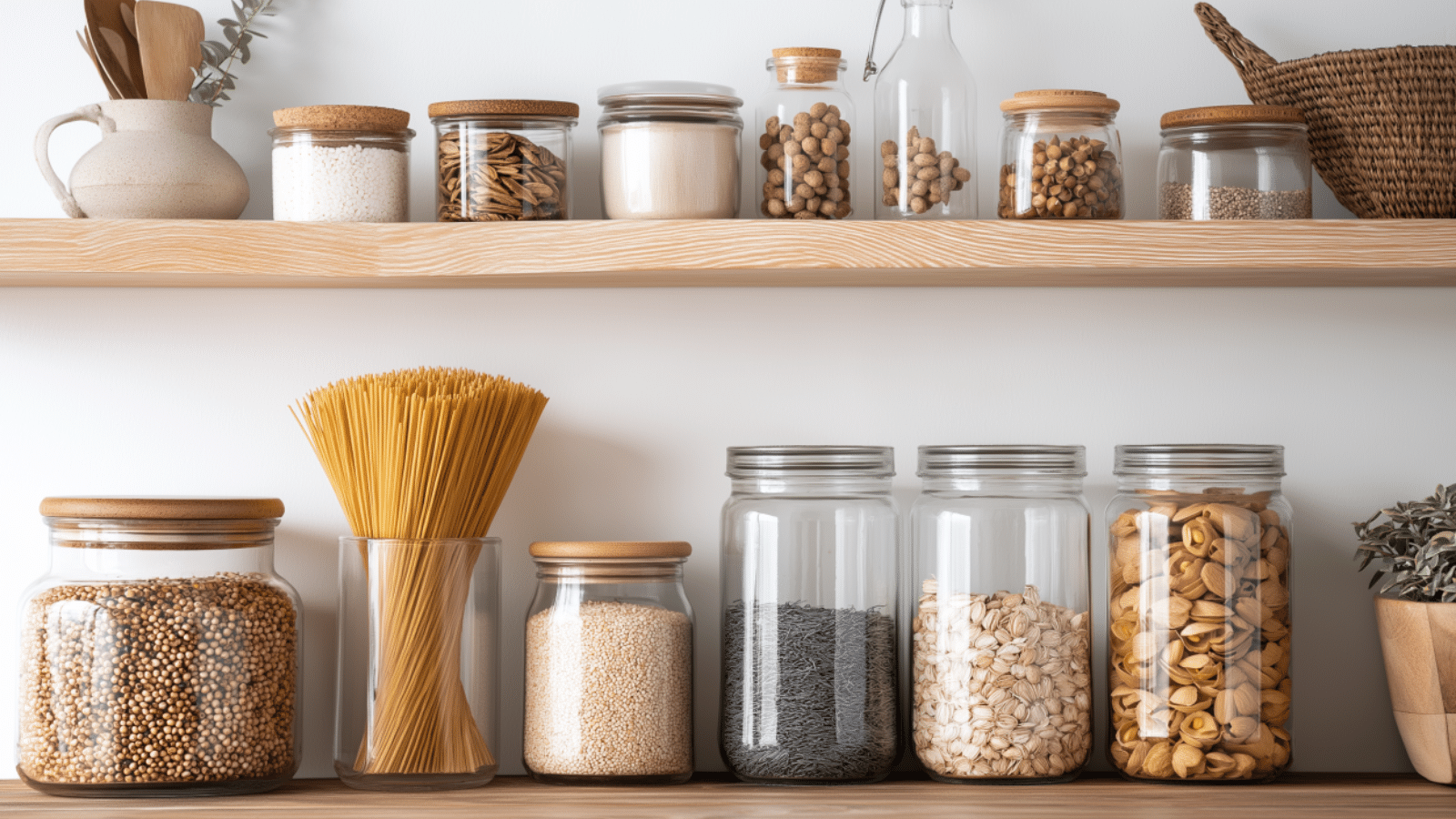How to Master Pantry Organisation in Small Spaces: Smart Storage Tips for a Tidy, Functional Kitchen
Table of Contents
Small pantries can be a daily frustration or a masterclass in clever storage—depending on how well they’re organized. Did you know that nearly 1 in 4 homeowners say the pantry is the most cluttered area in their kitchen? When space is tight, even one misplaced item can throw the whole system off. But with the right strategy, even the smallest pantry can be transformed into a stylish, efficient zone.
Pantry organisation in small spaces isn’t just about buying bins and baskets—it’s about designing a system that suits how you live. It’s about using vertical space, maximizing depth, and categorizing items in a way that makes sense to you and your family. Whether you’re working with a single cupboard or a narrow pull-out shelf, the goal is to create a functional flow that reduces waste, saves time, and brings a bit of daily peace.
In this article, we’ll explore easy, stylish, and highly practical ways to master pantry organisation in small spaces. From layout ideas and container hacks to labeling systems and real-life styling, this guide offers everything you need to create a beautiful and efficient pantry that fits your home perfectly.
Start With a Full Reset Before Organising

Before any jars are labeled or baskets are bought, you must reset your space. That means clearing every shelf and giving yourself a clean slate. This step might feel overwhelming, but it’s essential for long-term success.
Start by removing everything—yes, everything—from your pantry. Toss expired items, donate unopened non-perishables you won’t use, and group the rest into categories. Think grains, baking, snacks, canned goods, spices, etc.
Once the pantry is empty, wipe down all surfaces. This is also a good time to reassess shelf heights and configurations. Adjustable shelves are your friend, especially in tight spaces. Then, visualize how much space each category truly needs. You may be surprised by how much room gets wasted on rarely used items.
Table: Pantry Reset Checklist
| Task | Purpose |
|---|---|
| Remove all pantry contents | Get a full picture of inventory |
| Group like items | Prepare for logical re-zoning |
| Discard expired/unused items | Free up valuable space |
| Clean and assess shelves | Start fresh, adjust for ideal layout |
| Note storage categories | Helps guide bin and label purchases |
Use Clear Containers to Maximise Visibility and Space

One of the easiest ways to gain control in a small pantry is to remove bulky packaging and decant staples into clear containers. Airtight bins keep items fresher for longer and make it easy to see when you’re running low.
Choose stackable containers to fully utilize vertical space. Uniformity not only looks visually cleaner but also helps optimize shelf depth. Use square or rectangular bins rather than round ones, which waste space.
For grains, pasta, flour, and sugar, opt for larger containers. Use smaller bins for snacks, spices, and baking supplies. Add labels—either pre-made or custom vinyl—for quick identification. This system also helps reduce impulse buying since you’re more aware of your inventory.
Table: Container Types and Uses
| Container Type | Ideal For | Benefit |
|---|---|---|
| Tall rectangular bins | Pasta, rice, cereal | Saves vertical space |
| Medium jars | Flour, sugar, oats | Easy scooping and measuring |
| Small stackables | Snacks, spices, baking soda | Keeps small items from getting lost |
| Baskets with handles | Grab-and-go snacks, packets | Convenient access on higher shelves |
Designate Zones for Efficiency and Ease

One of the best organization principles—especially in tight spaces—is zoning. Think of your pantry as a mini grocery store. Items are grouped not just by type, but by usage. This creates intuitive flow, minimizes chaos, and saves time during meal prep.
Your pantry zones might include baking, breakfast, snacks, dinner prep, canned goods, and overflow. Place frequently used items at eye level or on the most accessible shelf. Use less-accessible zones (high or low) for backstock or occasional-use ingredients like holiday baking supplies.
Create micro-zones within bins if needed. For example, a breakfast bin might include oats, granola, honey, and instant coffee. A baking bin could contain sugar, cocoa powder, vanilla, and baking soda.
Table: Sample Pantry Zoning Plan
| Zone Name | Typical Items Included | Shelf Placement Suggestion |
|---|---|---|
| Everyday Essentials | Snacks, pasta, canned soup | Middle/eye-level shelves |
| Baking Zone | Flour, sugar, baking soda, cocoa | Mid to lower shelves |
| Breakfast Station | Oats, granola, tea, coffee pods | Easy-access bins or baskets |
| Overflow | Duplicates, bulk items | Higher shelves or floor baskets |
| Quick Meals | Canned beans, sauces, rice packs | Near front or in pull-out drawer |
Label Everything for Instant Clarity
Labels do more than look pretty—they’re crucial for maintaining order, especially in a small space. Labels ensure that everyone in the household knows what goes where, helping keep the system running smoothly.
Choose a labeling system that suits your style and needs. Chalkboard stickers allow flexibility, vinyl decals offer a sleek look, and clip-on tags are great for wire baskets. You can label both the bins and the shelves beneath them for even greater clarity.
Include expiration dates on a removable sticker for items that don’t get used often. Use larger font sizes for key categories and smaller labels for sub-categories. For bilingual homes, consider dual-language labels for universal accessibility.
Table: Label Types and Use Cases
| Label Style | Best For | Benefit |
|---|---|---|
| Chalkboard labels | Rotating contents | Erasable and flexible |
| Vinyl decals | Long-term staples | Sleek and permanent |
| Clip-on tags | Wire bins or fabric baskets | Removable and adjustable |
| Printed clear labels | Uniform bins and jars | Clean, professional finish |
Use Vertical and Door Space Creatively
Small pantries often overlook one of their greatest assets—vertical space. Install adjustable shelves that go to the ceiling, and use a foldable step stool to reach upper levels. For narrow shelves, consider pull-out drawers or tiered racks to prevent items from getting lost in the back.
The inside of a pantry door is prime real estate. Hang a multi-pocket organizer for spices, snacks, or backstock. Add narrow shelves or spice racks to store small jars or sauces. For deep cabinets, a lazy Susan can be a game-changer.
Don’t forget under-shelf baskets or clips. These hang from existing shelves to create additional mini-surfaces for smaller items like teas, pouches, or snack bars.
Table: Creative Space-Savers
| Area | Space-Saving Tool | Ideal For |
|---|---|---|
| Back of pantry door | Over-the-door racks/pockets | Spices, wraps, condiments |
| Shelf undersides | Under-shelf baskets | Snacks, napkins, tea packets |
| Deep shelves | Lazy Susan or drawer inserts | Oils, vinegar, sauces |
| Upper vertical space | Stacked bins or rarely-used items | Bulk goods, backup inventory |
Choose Stylish Storage to Elevate the Space
Just because your pantry is functional doesn’t mean it can’t be beautiful. When you’re working with a small space, making it aesthetically pleasing will inspire you to keep it organized. A cohesive color scheme, natural textures, and thoughtful styling go a long way.
Choose a storage color palette—classic white, soft beige, black accents, or warm woods. Match containers for visual consistency. Use woven baskets, wire bins, or ceramic jars to add tactile warmth and variation.
Add simple decorative touches: a linen curtain to hide lower shelves, a small framed quote, or a dried herb bunch for farmhouse charm. These details elevate the pantry from purely utilitarian to a curated nook that sparks joy.
Table: Pantry Styling Elements
| Aesthetic Element | Function + Style Benefit |
|---|---|
| Woven baskets | Warm texture, hides mismatched items |
| Neutral color palette | Visually calming and unified |
| Ceramic or glass jars | Stylish, sustainable storage |
| Small décor pieces | Adds charm without clutter |
| Wood shelf risers | Brings contrast and layered interest |
Conclusion
Mastering pantry organisation in small spaces is a blend of smart strategy and personal style. With careful planning—from resetting your space and categorizing essentials to selecting the right bins and labeling each zone—you can turn even the tiniest pantry into a showcase of efficiency and calm.
By thinking vertically, using clear containers, and integrating thoughtful styling, your pantry becomes more than storage—it becomes part of your home’s personality. It’s not just about aesthetics; it’s about creating a system that brings order to your daily life, reduces stress, and makes everyday tasks smoother and more enjoyable.
So whether you’re overhauling a cluttered cabinet or refining a modest walk-in, these techniques offer everything you need to transform your pantry into a beautifully organized space that truly works for you.

